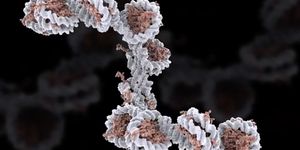The Structure of Immunity
When developing a new therapeutic approach to any disease, one way to begin is by determining the structure of the molecule or organism you are working with. The knowledge of physical characteristics provides opportunities for areas to focus on such as binding sites that can be inhibited. For this reason, a team of scientists works to build the atomic structure of an important immune system regulator.
In recent publishing of the online journal known as Scientific Report, a group of researchers from Brigham and Women’s Hospital describes the biophysical and structural characteristics of an immune regulating protein called human T cell immunoglobulin and mucin domain-containing protein-3 (hTIM-3).
The scientists hope that revealing the structure of hTIM-3 will provide new ideas for targeting the protein in diseases such as cancer and autoimmune disorders.
By making use of high-resolution X-ray crystallography and nuclear magnetic resonance imaging, the team can visualize hTIM-3 IgV domain and how it is involved with CEACAM1 – an immune evading mechanism for cancer.
X-ray crystallography is a technique for determining the three-dimensional structure of molecules, including complex biological macromolecules such as proteins and nucleic acids. It is a powerful tool in the elucidation of the three-dimensional structure of a molecule at atomic resolution. Diffracting X-rays collect data from a single crystal, which has an ordered, regularly repeating arrangement of atoms. Based on the diffraction pattern obtained from X-ray scattering off the periodic assembly of molecules or particles in the crystal, the electron density can be reconstructed.
Nuclear Magnetic resonance is described as selective absorption of very high-frequency radio waves by specific atomic nuclei that are subjected to an appropriately strong stationary magnetic field.
"The hTIM-3 protein is an important immune regulator, yet it has been difficult to target for drug development as high-resolution structure conformational details have been elusive," said senior author Richard Blumberg, MD, chief of the Division of Gastroenterology, Hepatology, and Endoscopy in the Department of Medicine at the Brigham. "We resolved the structure of hTIM-3 and established a novel biochemical assay to define its functionality, which will be useful for understanding the role of hTIM-3 in the immune system."
"This is the first NMR analysis of any immune-related TIM molecule and the first high-resolution structural report of the hTIM-3 IgV domain with association of critical co-factors such as calcium," said author Amit Gandhi, Ph.D., a researcher in Blumberg's laboratory in the Department of Medicine. "No one has been able to do this before. Hopefully, this will help with the targeting of human hTIM-3 and the development of useful therapeutics."
The team shares that the information collected will allow for an understanding of specific binding regions of the protein that therapeutic drugs can manipulate.
Sources: Scientific Reports, Science Direct, Science Daily, YouTube









